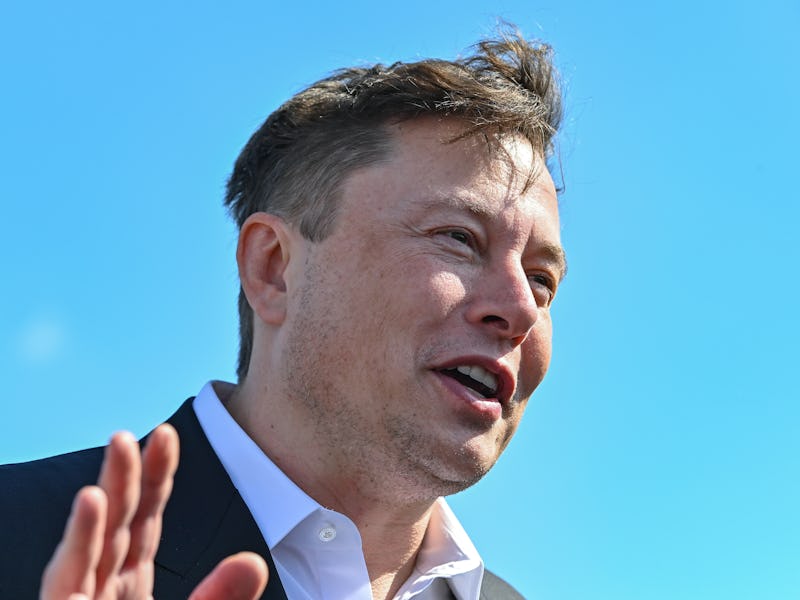SpaceX Starship: Elon Musk reveals a major imminent hurdle for the project
It will take a lot to get to Mars.

SpaceX wants to send humans to Mars, but forces on Earth could hamper its plans.
On Tuesday, CEO Elon Musk took to Twitter to warn that a “severe global recession” could trigger a perfect storm of issues for the company. If it came while SpaceX was investing money into its Mars-bound Starship rocket and its Starlink internet service, then bankruptcy “while still unlikely, is not impossible.”
It’s a tough time for SpaceX’s ongoing Starship project, which aims to develop a fully-reusable rocket capable of sending the first humans to Mars. Its use of liquid oxygen and methane as fuel would enable humans to use the planet’s resources to harvest more fuel and either return home or venture out further. The ship is capable of transporting 100 people or 100 tons to space at a time.
SpaceX will start making money from Starship once it’s completed and flying payloads for customers — until then, the company will have to pour money into its development.
The company is not the only one that wants Starship to be a success, as NASA has chosen the Starship as the human lander for its upcoming crewed Artemis mission to the Moon in 2025. Due to its current financial position, SpaceX will also appreciate its $2.9 billion NASA contract as a source of funding to complete the Starship.
The comments come after a Thanksgiving email sent to SpaceX employees, where Musk declared that production of the Starship’s Raptor engine faced a crisis.
“The Raptor production crisis is much worse than it seemed a few weeks ago,” Musk wrote in the email obtained by CNBC. “We face genuine risk of bankruptcy if we cannot achieve a Starship flight rate of at least once every two weeks next year.”
This may suggest a higher goal than previous comments. Last month, at the joint meeting of the Space Studies Board and the Board on Physics and Astronomy, Musk outlined three primary goals for the coming year:
- Complete the launch pad, tower, and basic tests before the end of 2021
- Host a 90-minute orbital flight with the Starship and its booster in January
- Host around a dozen test flights over the course of 2022
That would set up Starship to fly real, non-test payloads as early as 2023. From there, the goal is to send the first humans to Mars in the 2020s and establish a city on Mars by 2050.
Want to find out more about SpaceX’s plans to transform humanity into a multi-planet species? Subscribe to MUSK READS+ for exclusive interviews and analysis about spaceflight, electric cars, and more.
SpaceX Starship has completed several high-altitude test flights.
SpaceX Starship: Why the project faces financial turmoil
The Starship packs a lot of power. The ship itself uses six Raptor engines, and the Super Heavy booster used to lift the ship away from Earth packs a further 33 engines. That means each ship needs 39 engines — compare that to SpaceX’s existing Falcon Heavy, the world’s most powerful rocket, which requires 28 Merlin engines.
SpaceX needs to build a lot of Raptor engines to make each Starship. In July 2021, Musk wrote on Twitter that SpaceX aims to produce 800 to 1,000 Raptor engines per year. This, sustained over 10 years, would enable the company to build enough ships to build a self-sustaining city on Mars by 2050.
But Raptor production is facing issues. In the latest email, Musk explained that vice president of propulsion Will Heltsey was taken off Raptor production earlier in November. But it seems the issues were worse than Musk realized, which pushed Musk to work over the Friday and weekend after Thanksgiving.
“We need all hands on deck to recover from what is, quite frankly, a disaster,” he wrote.
On top of all this, SpaceX is investing in building up its Starlink internet service. This under-development constellation promises high-speed and low-latency internet service to anywhere in the world. The company rolled out beta services to users in the U.S., Canada, and the U.K. last year.
YouTuber Tim Dodd, also known as “Everyday Astronaut,” summarized the issue on Twitter:
“My understanding of the “Raptor production problem” is mostly the huge investment in Starship, Starlink 2.0 / receiver, & other things relying on Starship. So until starship flies often, there’s a potential cash flow issue, & Raptor production is the biggest risk for bottle neck”
Musk replied to the summary with a single “yes,” indicating that SpaceX faces more pressures than just Raptor production.
The Inverse analysis — Musk is no stranger to production difficulties — he faced a similar “production hell” in 2018 at Tesla, as the electric car company raced to produce 5,000 Model 3 vehicles per week.
Starship won’t make money for SpaceX until it’s sending payloads and customers into space for commercial and government clients. The ship’s rapid reuse capabilities, which could mean three flights per ship per day, could help SpaceX reduce flight costs to just $2 million. This, coupled with its ability to send far larger payloads into space, makes it an attractive prospect.
Musk has faced down skeptics before, but success is not a given. SpaceX will need to start flying Starship payloads to make it through its financial difficulties.
SUBSCRIBE TO MUSK READS+, A PREMIUM NEWSLETTER THAT COVERS THE WORLDS OF ELON MUSK, SPACEX, TESLA, AND EVERYTHING BETWEEN.
This article was originally published on